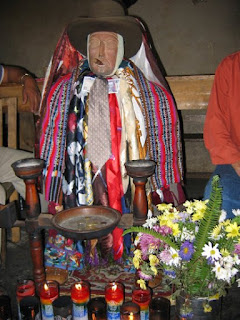In his review book: Reading & Writing, Naipaul writes about his process of becoming a writer, since his childhood, in his autobiography. He uses various techniques in order to create more vivid pictures of the persons mentioned in this autobiography. He's transforming them into characters. They are, essentially, what gives this work such value and makes it all the more entertaining. For example: Mr. Worm was one of Naipaul's teachers. There is a great description of him in the autobiography. "Elderly mulatto, short and stout, correct in glasses and a suit." He describes later that it was Mr. Worm which introduced him to one of his favorite books : Twenty Thousand Leagues Under the Sea. We can clearly see that Naipaul makes the connection between one of the few books he ever enjoyed as a child to Mr. Worm. Another character introduced is his father. He was a journalist and a reader who sought the special traits of each character he read about and taught Naipaul about what he read, and, ultimately, inspired him to become a writer.
V.S Naipaul makes use of different techniques in his autobiography in order to make it more interesting for the reader. For example: characterization is a staple in this autobiography. He gives attractive qualities to the characters he portrays in order to make them interesting and relatable. another example of a technique is relatability. He tells us that, initially, he did not enjoy reading many books, and he did not enjoy writing. This is something that most scholars could relate to. This relatability is what makes the reader want to continue with the reading since he has made an identification with one of the characters.
Lastly, Naipaul makes us of belittlement on himself in order to make himself appear grander. Nobody expects that a person who: does not enjoy writing nor reading, to become a full fledged writer, and a great autobiographer, but he does. Suddenly this, underdog, came and became what nobody expected from him: a writer. Al of these techniques, when put together, can make something as boring as an autobiography seem more interesting; maybe even a great read. Similar to writers such as Carl Jung, Naipaul makes use of various techniques in order to give his autobiography more excitement.

 As I dove into this writing experience I learned about the great impact it had on my writing. The first few entries were hard because of the anti-rules. I'm accustomed to write coherently while being on the lookout for any possible errors I could commit, however, these new set of rules changed the game. I could now focus solely on the ideas and nothing more. I caught myself dashing out or fixing some of the words I miswrote. Even stopping to think because of the sudden "writer's block". Still I learned and pretty much dominated these rules. This style of writing has helped me in other classes to get my ideas flowing in order to write killer essays. Forty Journal entries and twelve Life Compasses were made.
As I dove into this writing experience I learned about the great impact it had on my writing. The first few entries were hard because of the anti-rules. I'm accustomed to write coherently while being on the lookout for any possible errors I could commit, however, these new set of rules changed the game. I could now focus solely on the ideas and nothing more. I caught myself dashing out or fixing some of the words I miswrote. Even stopping to think because of the sudden "writer's block". Still I learned and pretty much dominated these rules. This style of writing has helped me in other classes to get my ideas flowing in order to write killer essays. Forty Journal entries and twelve Life Compasses were made.